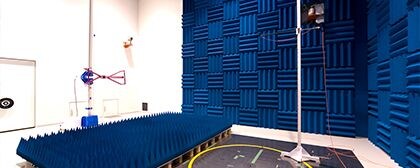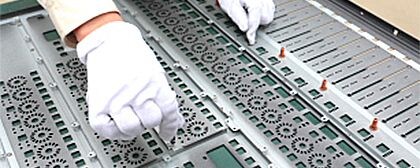Quality Management
Control de calidad de Yamaha: Gestión de calidad
La división de calidad y planeación de ingeniería de Yamaha maneja las pruebas solicitadas por las diferentes divisiones de desarrollo de producto de acuerdo con el Sistema de gestión de calidad de Yamaha. El Sistema de gestión de calidad de Yamaha para productos de audio profesionales cumple la norma ISO9001:2015 y está certificada por BV (Bureau Veritas: una empresa de certificación reconocida a nivel internacional con su base en Francia). Sus normas se aplican y mantienen desde la planeación del producto hasta el desarrollo y producción para la venta. El sistema de Yamaha, sin embargo, ha sido personalizado para cumplir con criterios aún más exigentes que correspondan con las muy ambiciosas metas de calidad interna. El sistema de gestión de calidad se aplica no solo a las operaciones en Hamamatsu, Japon, sino también a todas las otras fábricas de audio profesional de Yamaha en Japón e Indonesia también. El alcance integral del sistema garantiza que las mismas políticas, objetivos y normas se compartan en todas las instalaciones y con el personal de Yamaha pro audio, sin importar donde estén, para que el nivel del producto y la calidad de servicio que se exige se puedan conservar a escala mundial.
El siguiente es un resumen breve de algunos de los elementos principales regulados por el Sistema de gestión de calidad:
Compliance with Laws and Regulations
All products must comply with the laws and regulations of the countries in which they will be sold. These are basic but essential requirements that include the safety and environmental considerations mentioned below.
Safety
Most countries have strict fire and shock safety standards for electronic devices. Yamaha's internal standards are even stricter.
Environment
Many environmental issues can be categorized under "safety," but most also have more far-reaching implications for the environment at large. Europe's RoHS Directive (the restriction of the use of certain hazardous substances in electrical and electronic equipment), for example, bans new electrical and electronic equipment containing more than agreed levels of lead, cadmium, mercury, hexavalent chromium, polybrominated biphenyl (PBB) and polybrominated diphenyl ether (PBDE) flame retardants.
Electromagnetic Compatibility
EMC (Electromagnetic Compatibility) includes both EMI (Electromagnetic Interference: the effect a product might have on other electronic devices) and EMS (Electromagnetic Susceptibility: the susceptibility of the product to interference from other electronic devices).
Performance
Since there are no defined standards for characteristics such as sound quality, this is an area in which internal criteria must be applied. Yamaha sound quality is based on more than a century of manufacturing musical instruments, more than 35 years manufacturing analog sound reinforcement equipment, and more than 20 years making industry-leading digital mixing consoles.
Reliability and Durability
To most professional users reliability and durability are another aspect of "performance," and are equally as important as sound quality. Yamaha products must perform reliably in continuous use under a wide range of sometimes-adverse conditions.
Usability
Interface logic and design, for example, has a huge influence on how easily and intuitively a product can be used.
Visual Design
The visual appeal of a product is undoubtedly an important aspect of its overall quality. But there are also many areas in which appearance and performance are interdependent, so care must be taken to achieve the optimum balance.
Transportation and Storage
In addition to transportation and storage of products in their original packaging when they are shipped from the factory, professional equipment must be designed for easy handling by the end user, and it must be able to withstand repeated unloading, setup, loading, and transport in everyday use.
Maintenance
This item includes the serviceability of the products themselves as well as the response and quality of the support and service provided by Yamaha.
The Ultimate Goal
In addition to the obvious need for absolute safety, the ultimate goal of the Yamaha Quality Management System is total customer satisfaction. Total customer satisfaction can only be achieved by providing a stable supply of products of the highest quality at the lowest possible cost along with responsive and effective support. Easier said than done. Like the products themselves, quality management must continually evolve to keep pace with continuously changing markets, user needs, and technology. The Yamaha Quality Management System is right at the leading edge.
The Yamaha Quality Support Center
The Quality Support Center is a world-class testing laboratory that houses some of the most advanced and sensitive testing facilities for electronic devices available anywhere.
Production
Production can only begin after the final engineering samples have passed all tests and have been fully approved by the Quality Support Center as well as all of the involved development groups. But that is by no means the end of quality management. Monitoring and testing continue throughout the manufacturing process to ensure that quality goals are maintained.








